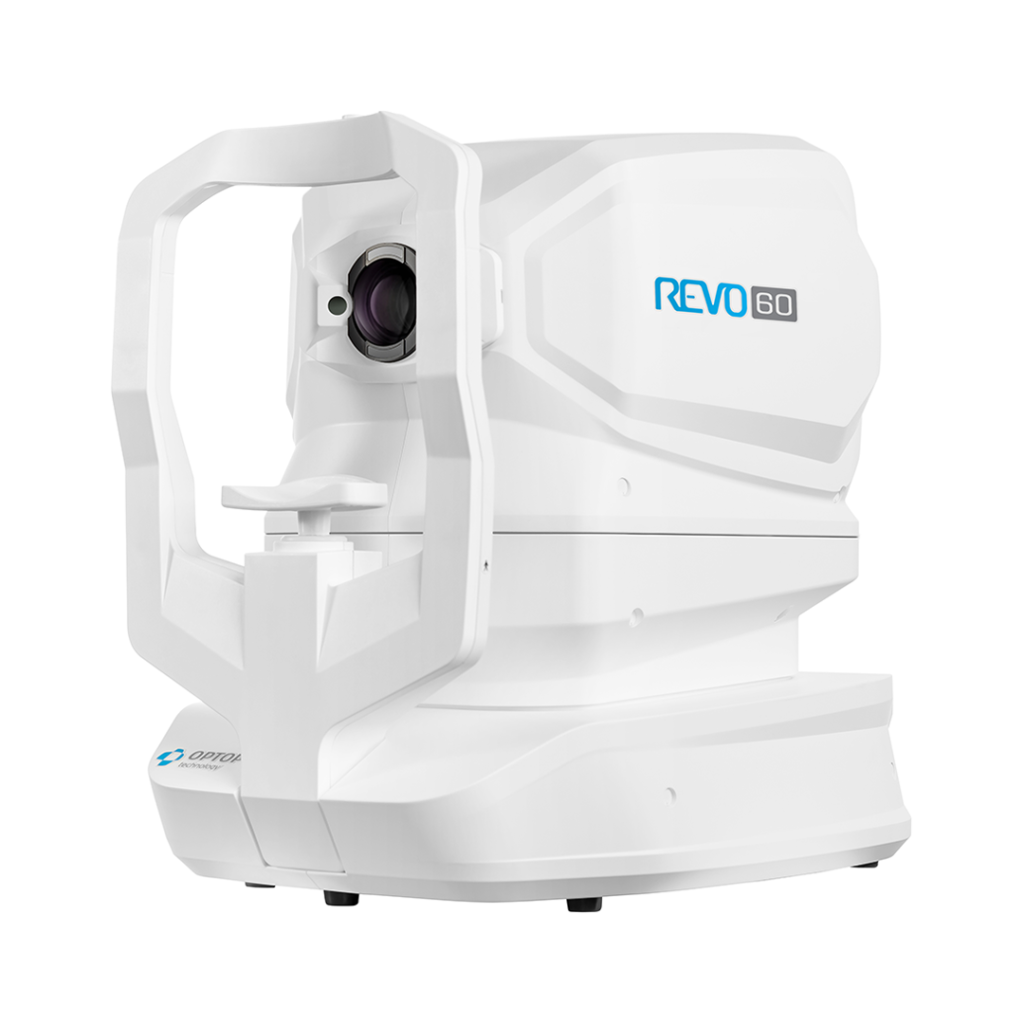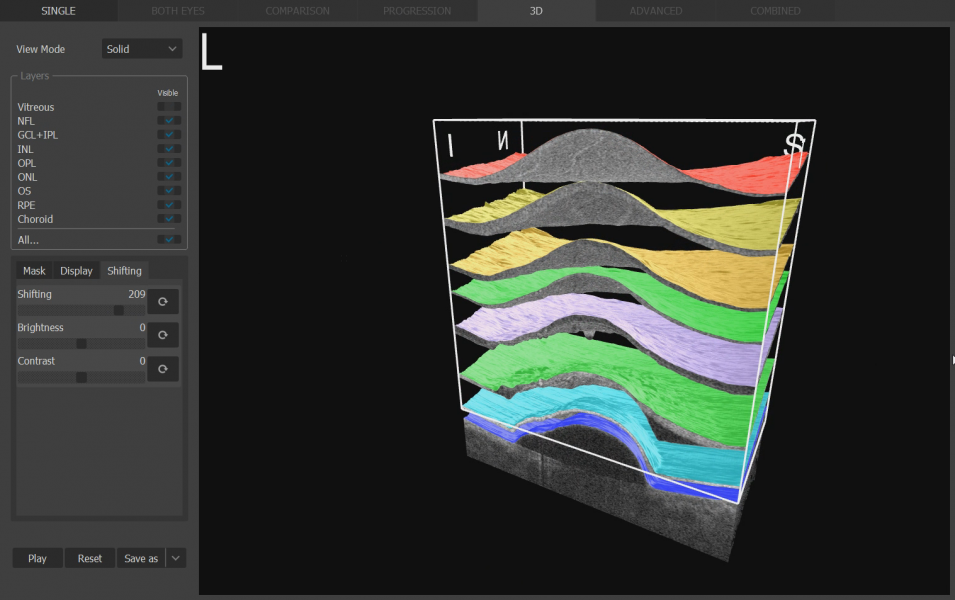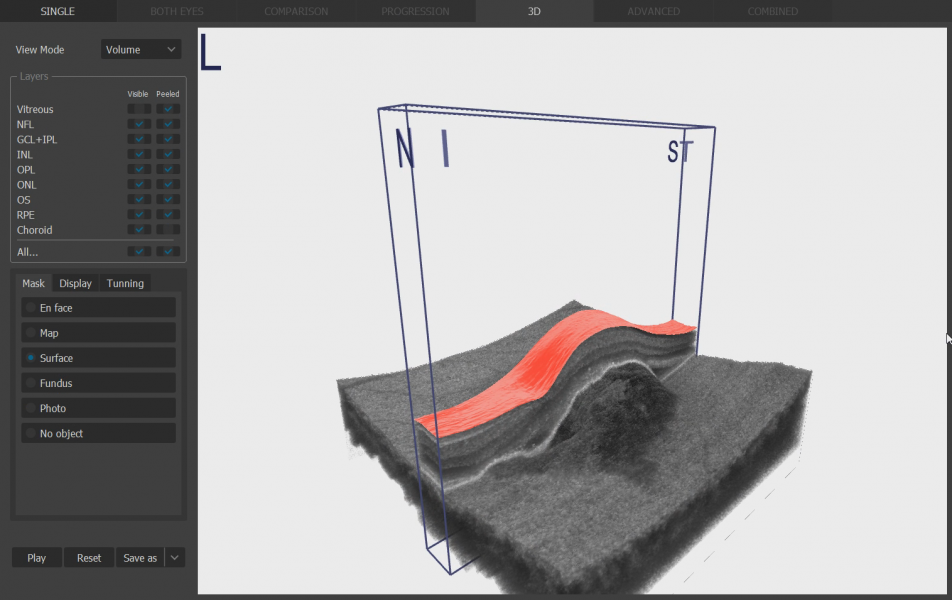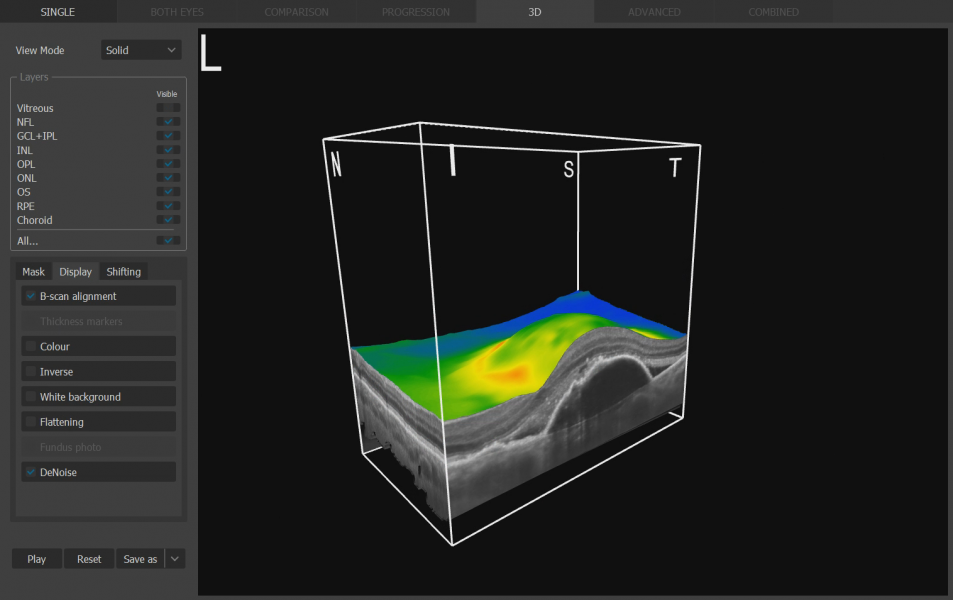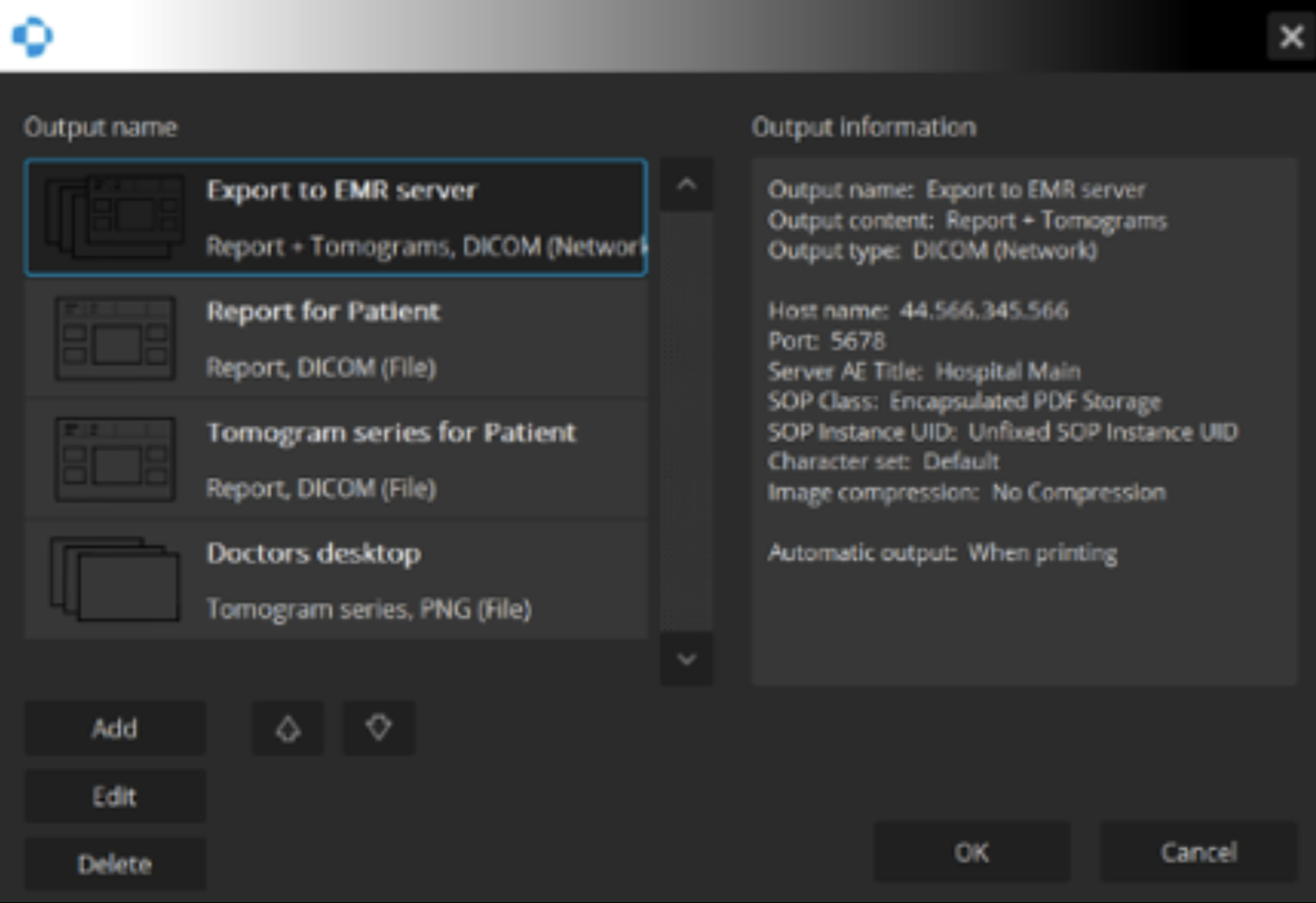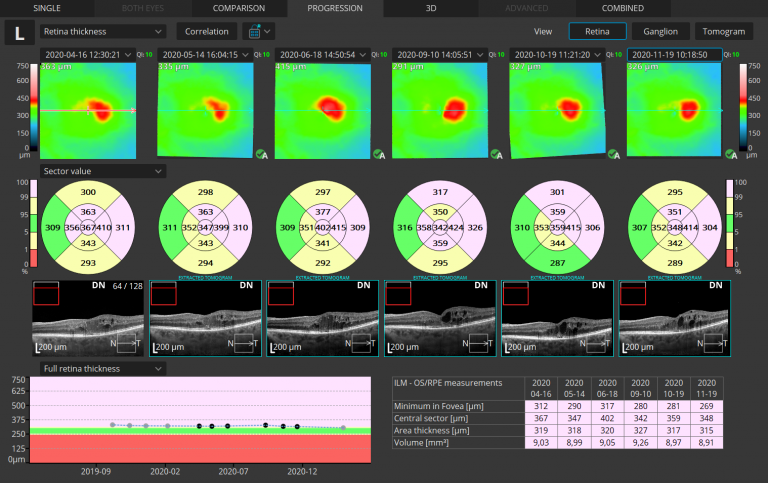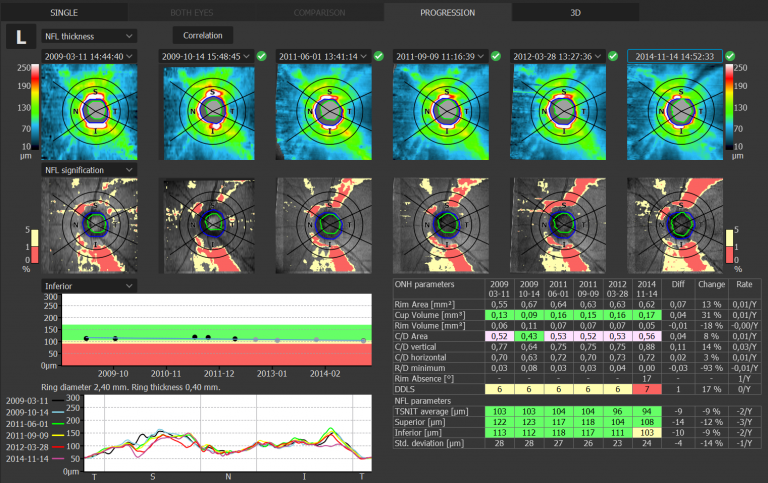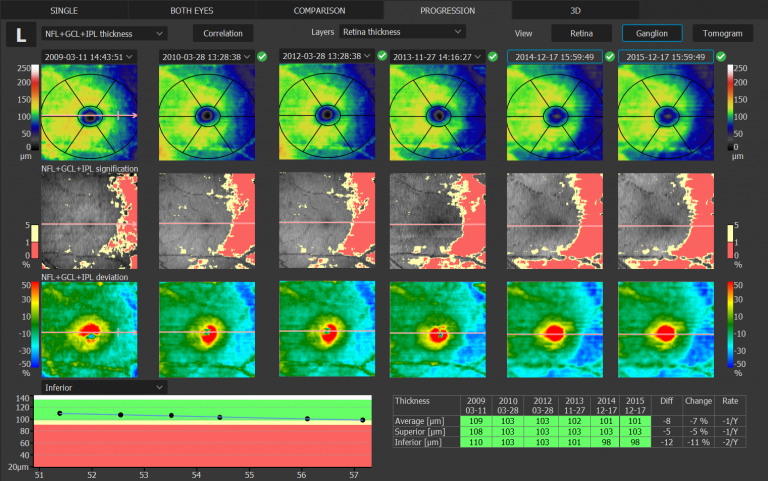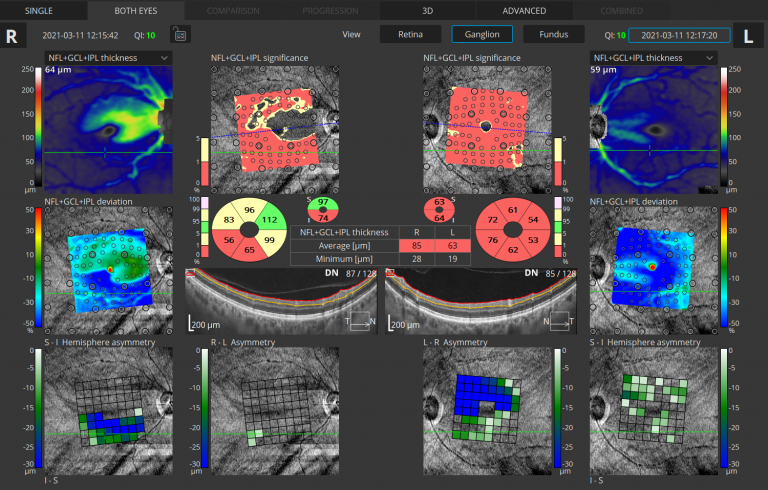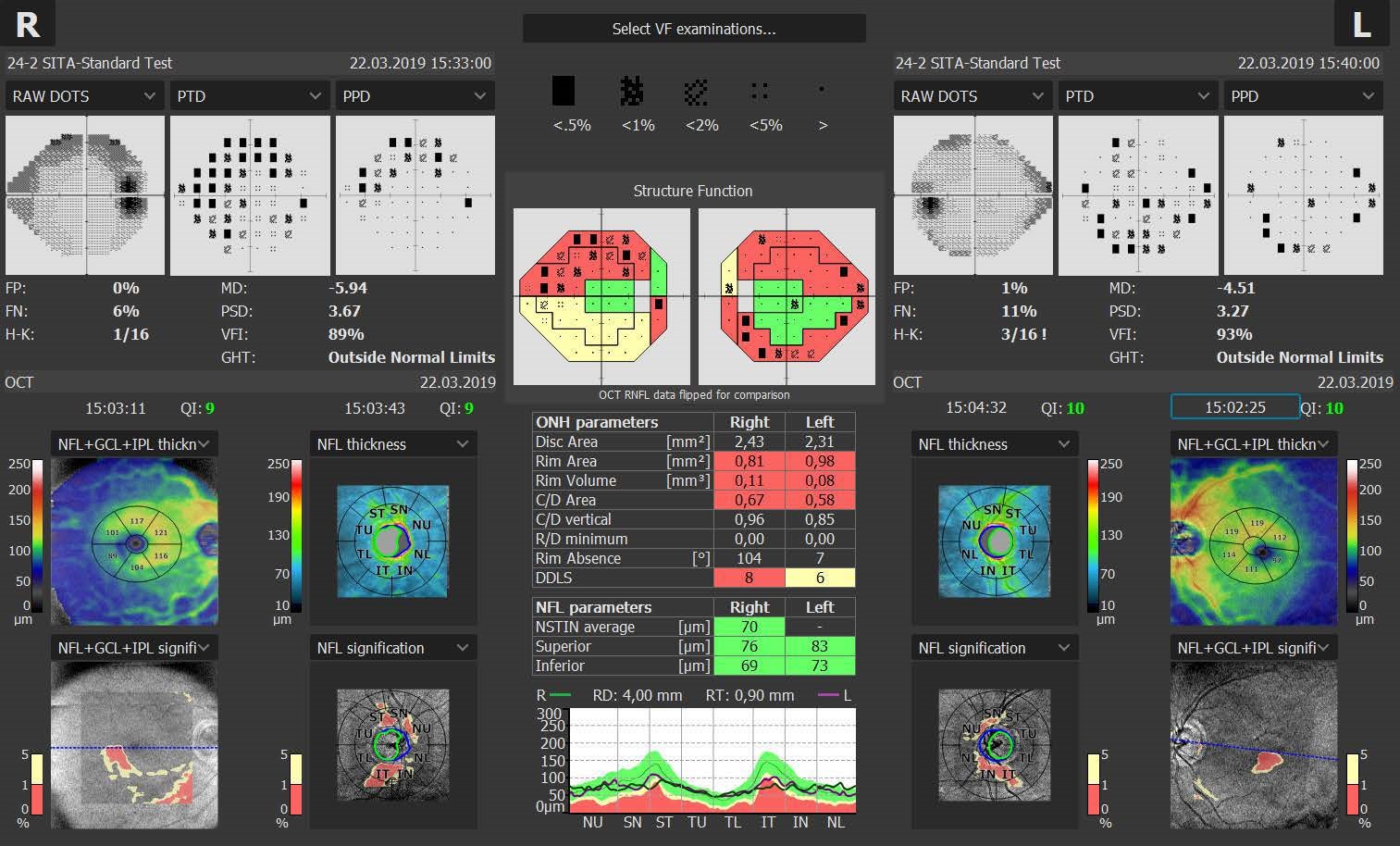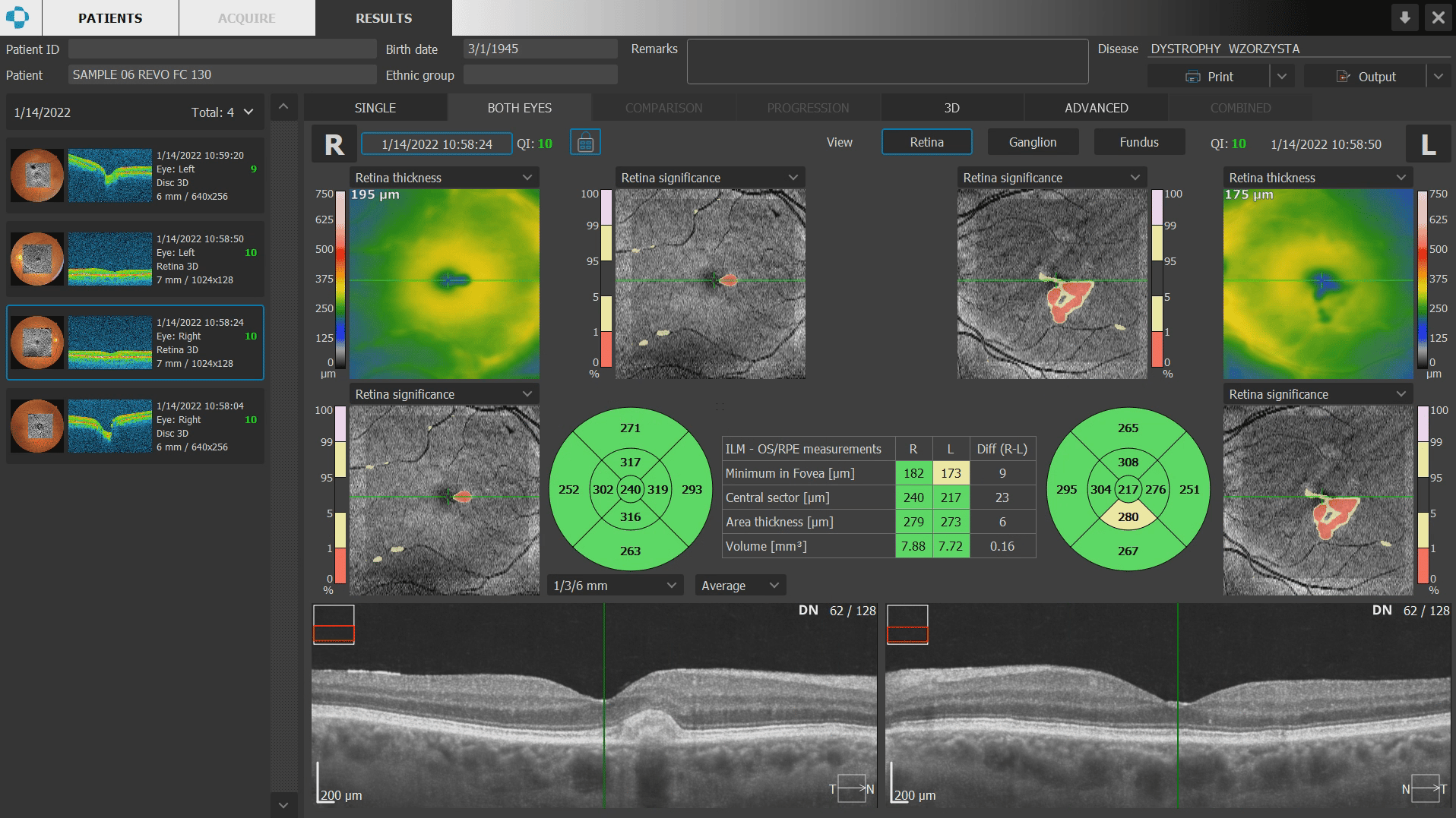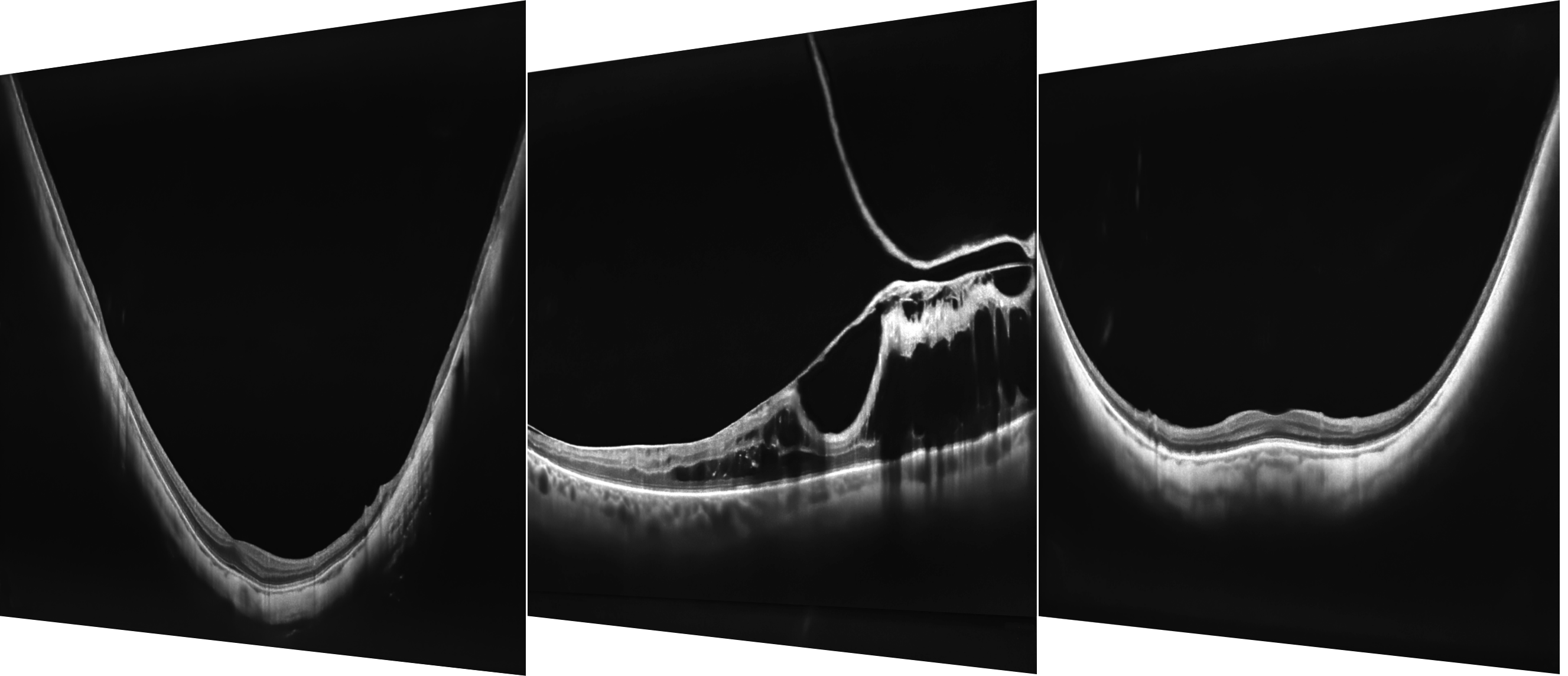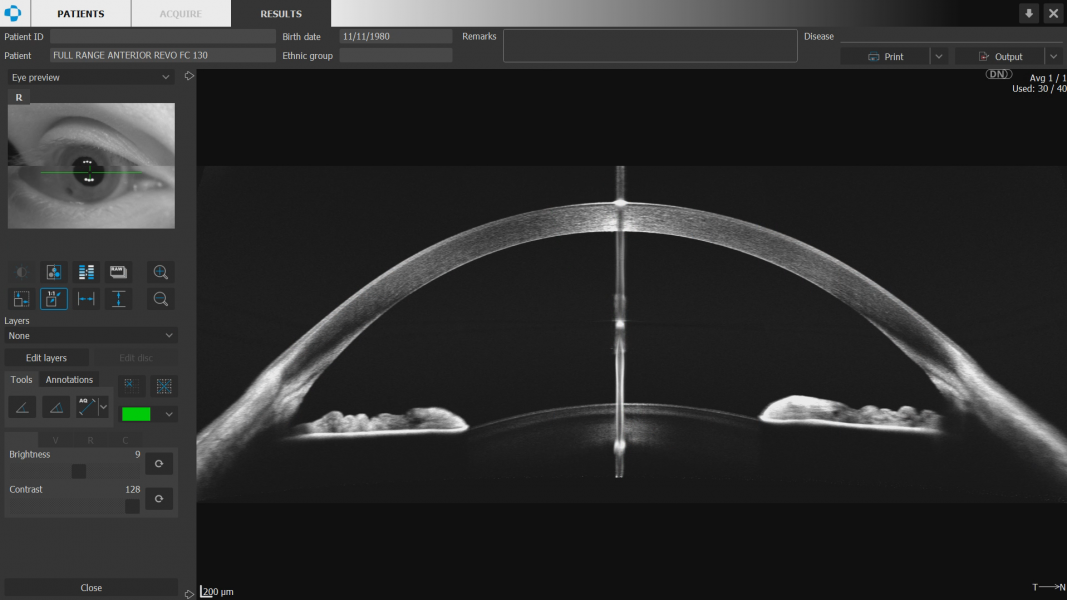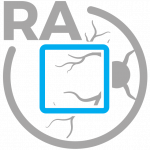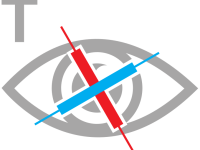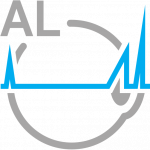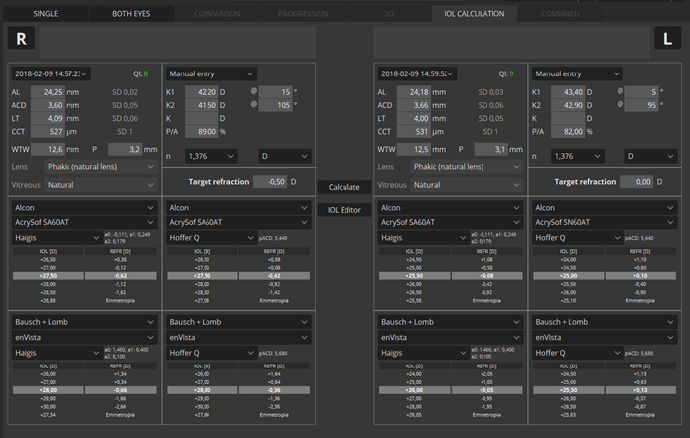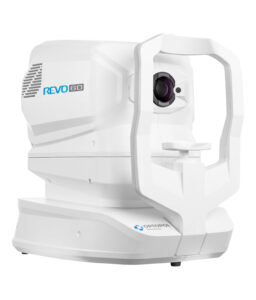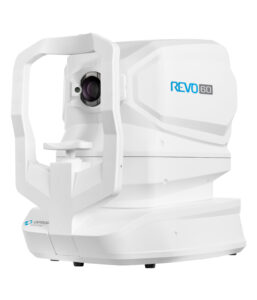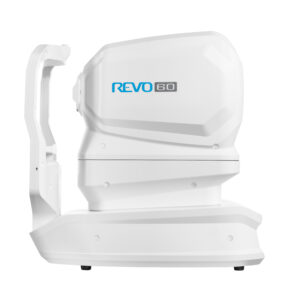| Technology |
Spectral Domain OCT
|
| Scanning speed | 60 000 measurements per second |
| Light source |
SLED Wavelength 850 nm
|
| Bandwidth |
50 nm half bandwidth
|
| Axial resolution | 2.8 μm digital, 5 μm in tissue |
| Transverse resolution |
12 μm, typical 18 μm
|
| Overall scan depth |
2.8 mm / ~6 mm in Full Range mode
|
| Scan range |
Posterior 5 mm to 15 mm, Angio 3 mm to 6 mm, Anterior 3 mm to 18 mm
|
| Scan program | 3D, Angio¹, Full Range Radial, Full Range B-scan, Radial, B-scan, Raster, Cross, TOPO¹ , Biometry AL¹ |
| Fundus image |
Live Fundus Reconstruction
|
| Alignment method |
Fully automatic, Automatic, Manual
|
| Retina analysis |
Retina thickness, Inner Retinal thickness, Outer Retinal thickness, RNFL+GCL+IPL thickness, GCL+IPL thickness, RNFL thickness, RPE deformation, MZ/EZ-RPE thickness
|
| Angiography OCT¹ | Vitreous, Retina, Choroid, Superficial Plexus, RPCP, Deep Plexus, Outer Retina, Choriocapilaries, Depth Coded, SVC, DVC, ICP, DCP, Custom, Enface, FAZ, VFA, NFA, Quantification: Vessel Area Density, Skeleton Area Density, Thickness map |
| Angiography mosaic | Acquistion method: Auto, Manual Mosaic modes: 10×6 mm, Manual up to 12 images |
| Glaucoma analysis |
RNFL, ONH morphology, DDLS, OU and Hemisphere asymmetry, Ganglion analysis as RNFL+GCL+IP and GCL+IPL,
Structure + Function² |
| Anterior |
Pachymetry, Epithelium map, Stroma map, AIOP, Angle Assessment, AOD 500/750, TISA 500/750
|
| Anterior (no lens/adapter required) |
Anterior Chamber Radial, Anterior Chamber B-scan, Angle to Angle view
|
| Biometry OCT | AL, CCT, ACD, LT, P, WTW |
| IOL Calculator ³ | IOL Formulas: Hoffer Q, Holladay I, Haigis, Theoretical T, Regression II |
| Corneal Topography Map¹ | Axial [Anterior, Posterior], Refractive Power [Kerato, Anterior, Posterior, Total], Net Map, Axial True Net, Equivalent Keratometer, Elevation [Anterior, Posterior], Height, KPI (Keratoconus Prediction Index) |
| Connectivity | DICOM Storage SCU, DICOM MWL SCU, CMDL, Networking |
| Min. pupil size | 1.7 mm |
| Focus adjustment range | -25D to +25D |
| Dimensions (LxWxH) / Weight | 479 mm x 367 mm × 493 mm / 29 kg |
| Fixation target | OLED display (The target shape and position can be changed), External fixation arm |
| Power supply / Consumption | 100 V to 240 V, 50/60 Hz / 90 VA to 110 VA |
¹ An optional software module
² Via connection with PTS software version 3.4 or higher
³ The Biometry module and a separate license for the IOL Calculator are required

